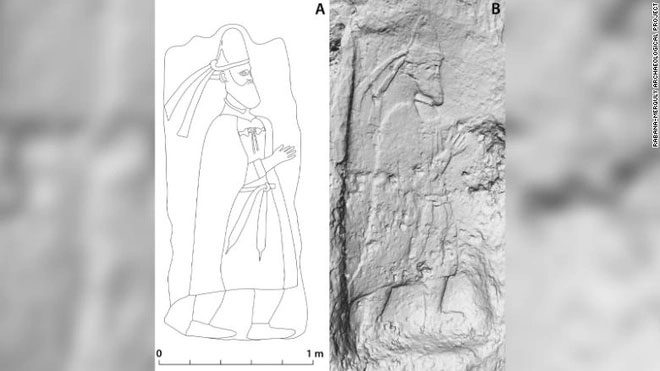Archaeologists have unearthed a 2,000-year-old fortress in the mountain range of the Kurdistan region of Iraq, believed to be part of the lost ancient city of Natounia.
A study published by the journal Antiquity on July 19 reveals that the Rabana-Merquly stone fortress includes a nearly 4 km long fortification, two settlements, stone reliefs, and a religious complex. The fortress was discovered after a long excavation period starting in 2009, according to CNN.
Michael Brown, a researcher from Heidelberg University in Germany and the head of this archaeological project, stated that the fortress is located on the borders of the ancient kingdom of Adiabene. This kingdom is thought to have been adjacent to the Parthian Empire, which spanned regions in Iran and Mesopotamia around 2,000 years ago.
Brown further noted that the entrance features a carving of the king of Adiabene, based on the clothing, particularly the crown of the figure. He speculated that this fortress may have once been the royal city of Natounia, part of the kingdom of Adiabene.

The sculpture at the entrance of Rabana-Merquly (right) is believed to depict the king of the kingdom of Adiabene. (Photo: CNN).
“Natounia is only known from rare coins, and there are no other detailed references,” he stated.
Based on the details of the coins, researchers believe that Natounia was named after King Natounissar, and the city was located by the Lower Zab River, or the Kapros River in ancient times.
In a discussion, researchers mentioned that Rabana-Merquly is not the only site believed to be the city of Natounia, but so far, this fortress shows the most signs indicating it was part of the “lost city.” The king depicted on the entrance may be Natounissar or one of his descendants.
The study indicates that Rabana-Merquly was once a place where tribes engaged in trade, maintained diplomatic relations, or exerted military pressure.


















































